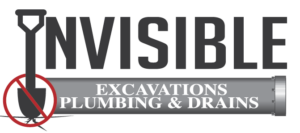There are approximately 30,000 sewer line breaks and 300,000 sewer line blockages in the U.S. every year.
More than 50% of all sewer blockages and backups are due to tree root invasion.* Some of the factors that contribute to this percentage include:
Sewer line installation
Sewer line age
Sewer line material
Sewer line size
Surrounding tree species
When sewer lines are installed, the process usually involves digging a large trench, laying the pipe, and then filling the trench back up. This makes the soil around the sewer line looser than surrounding soil. Roots prefer to grow in this type of soil and will seek it out.
Additionally, tree roots are spreading in all directions, searching for water and nutrients. So, not only are they drawn to the loose soil, but also the water flowing through your sewer lines.
Older Sewer Lines Are More Susceptible to Root Invasion
Older pipes were made of clay or cast iron – both of which are more susceptible to root invasion than newer PVC and ABS pipes.
Clay pipes have joints packed with mortar, which develop cracks over time. Cast iron pipes corrode and crack over time. Tiny tree roots enter these cracks in the mortar or pipe, searching for food and water. Once inside, they continue to grow feeding on the water and nutrients inside the pipes.
It is possible for them to grow for quite a while before you realize there’s a problem. There are stories of plumbers removing roots over 10 feet long and nearly an inch thick.
Fast Growing Trees Cause Bigger Problems for Sewer Lines
The size and aggressive nature of some trees will determine whether or not their roots enter your home’s sewer line. Therefore when looking at property, or when designing new landscape, it’s important to consider both what’s happening above and below ground.
Sewer Line Safe Landscaping: How to Plan
Step one is finding the sewer lateral on your property. You can either check your home’s survey documents through the city, or use a few key reference points, such as the sewer cleanout and markings on the sidewalk. It might also be helpful to have a plumber come out for a yearly inspection of the sewer line, who can show you exactly where it runs across your yard.
Once you’re aware of where the main sewer line runs, there are three basic principles to follow when planning your landscaping.
Limit the Number of Trees You Plant
Planting fewer trees limits the possibility that your sewer line will be invaded with roots.
Pick the Right Type of Tree to Plant
Any species of tree can cause damage to your pipes, but while some trees pose little threat to sewer lines, others have wide-spreading, aggressive roots set on entering them. As a general rule of thumb, trees that grow quickly above ground also grow quickly below ground. So, when planting near a sewer line, try to avoid trees known to be aggressive growers such as Silver Maples, Hybrid Poplars and Willows. Listed below are just a few recommendations.
Fruit Trees with Non-Invasive Root Systems
Adams Crabapple
Cornelian Cherry Dogwood (can be grown as small tree or large shrub)
Pawpaw
Kousa Dogwood
Shade Trees with Small Root Systems
Amur Maple
American Hornbeam
Trident Maple
Cypress
Shrubs with Non-Invasive Root Systems
Crape Myrtle, a pink flowering tree
Skyrocket Juniper, a low-maintenance tall, skinny evergreen
Japanese Maple, a scarlet red tree
Plant the Trees at a Safe Distance
When planting trees or shrubs, ensure that reaching the sewer line will be difficult for them. It will also help to plant the trees in large pits of loosened, nutrient rich soil. This will encourage them to stay within the pit and not seek out loose soil or nutrients elsewhere. Similarly, if you keep your trees well-watered, they will not be so inclined to seek out water elsewhere.
Removing Tree Roots from Sewer Lines
There are three main options for clearing roots from sewer pipes:
Chemicals
Snaking
CIPP
Before deciding which method to use, it’s best to conduct a video pipe inspection. This inspection will show you, in real-time, exactly where the roots have entered your sewer line and how much damage they’ve caused. This inspection will also help you to come up with a more permanent sewer line repair solution instead of a temporary fix.
Using Chemicals to Clear Roots from Sewer Lines
More accurately called “root-control” products, many of the marketed chemicals promising to rid your sewer lines of roots are not recommended by professional plumbers. In a typical sewer line, the water only fills a small percentage of the bottom of the pipe. Therefore, the chemicals will only burn the portions of the roots that are in the water. The chemicals may also burn more than the roots, they may harm your pipes themselves.
Using a Snake to Clear Roots from Sewer Lines
A drain snake, or a long cable with a rotating auger, is inserted into the pipe. The auger slices the roots, reopening up the drain for free water flow.
Using Cured-In-Place-Pipe (CIPP) to Remove Roots from Sewer Lines
CIPP is the most permanent solution to rid your sewer line of roots and prevent future infestation. First, we clear out the existing roots with a high-pressure water jet. Then, we use state-of-the-art technology to line your existing pipe with CIPP. The greatest benefit of CIPP is that it is seamless, meaning there are no joints for roots to enter. Another great benefit is its 50-year guarantee.
Want to know more about CIPP? Read “What is Cured in Place Pipe?”
Sources:
https://www.clemson.edu/extension/hgic/videos_posters/breeze/tree_roots_and_sewer_lines.pdf
https://www.fs.usda.gov/treesearch/pubs/45998
http://blog.davey.com/2017/05/fruit-shade-and-curbside-trees-with-non-invasive-root-systems/

